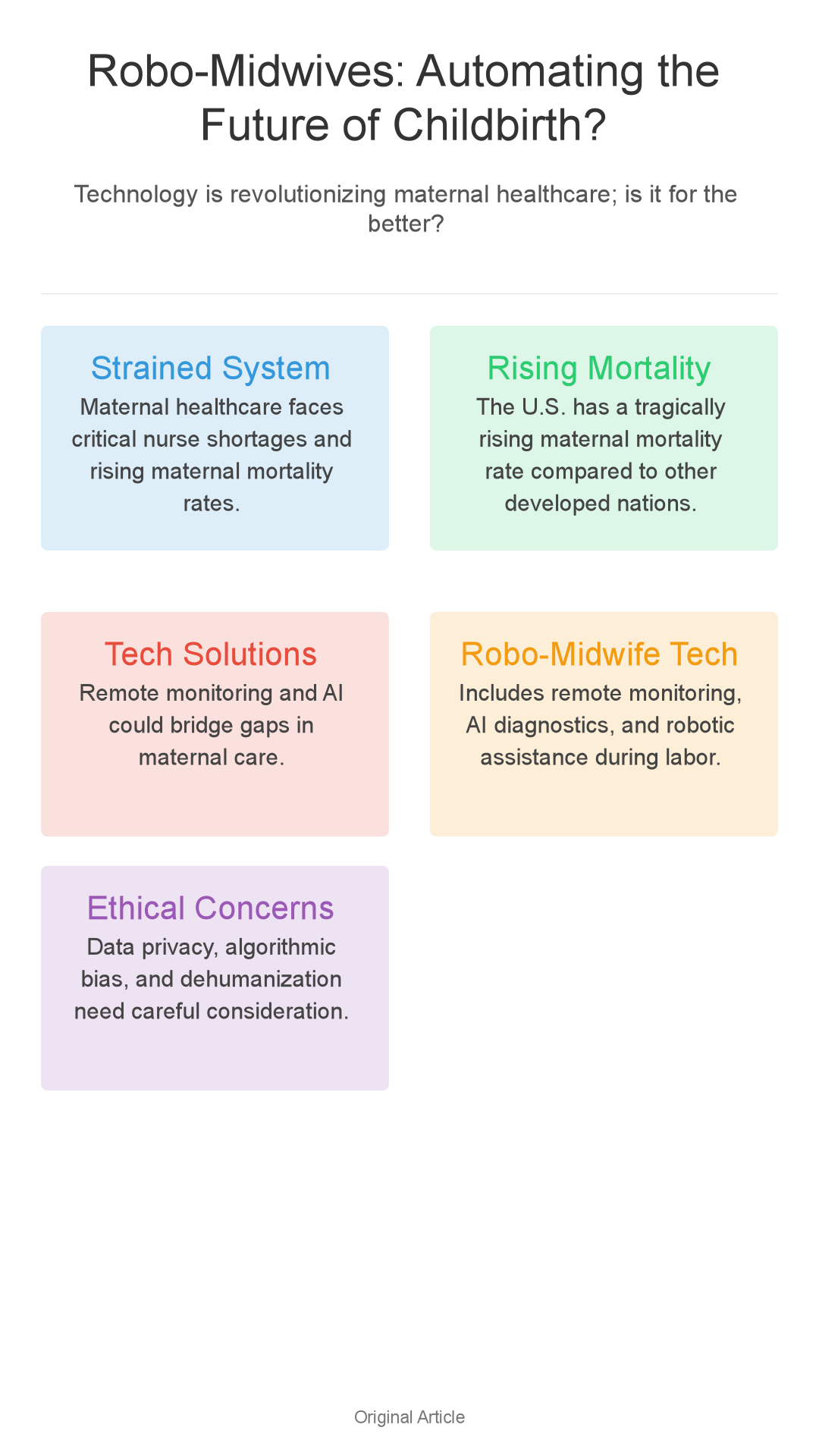
Remember that awkward moment during my labor? It turns out, that cringeworthy experience might have
Ever watched a sci-fi movie and scoffed, “That’ll *never* happen?” Well, buckle up! Robotic midwives are no longer a futuristic fantasy, and suddenly my own hilariously chaotic childbirth feels strangely prophetic. Smash that like button if you’re ready to explore the fascinating (and slightly unnerving) world of female-centric automation! And don’t forget to follow for more deep dives into the tech shaping tomorrow!
and robots. Specifically, the increasingly real possibility of robots assisting during childbirth. I know, I know: it sounds like something ripped from the pages of a dystopian novel! And believe me, I get the initial skepticism.
But before you start building your underground bunker, hear me out.
My “Comedy of Errors” Birth & The Overwhelmed Healthcare System
A Humorous (But Real!) Account
Picture the scene: I’m in labor, contractions are hitting with the force of a meteor shower, and I’m pretty sure I aged a decade with each one. We frantically rush to the hospital, only to be greeted by… a waiting room.
A *jam-packed* waiting room. Turns out, the hospital was severely understaffed, and every single labor room was occupied. After what felt like an eternity (but was probably only a few agonizing hours), I finally got a room.
The nurses were absolute angels, don’t get me wrong. They were sprinting around like superheroes, but the exhaustion etched on their faces was undeniable.
They were stretched paper-thin, juggling multiple patients, and desperately trying to provide the best possible care.

The Strain on the System
My experience, while somewhat comical in hindsight (now that I’m not screaming in agony), is far from unique. The harsh reality is that the maternal healthcare system is facing immense strain.
We’re grappling with critical nurse shortages, especially in obstetrics.
The American College of Obstetricians and Gynecologists (ACOG) reports that the United States has a tragically rising maternal mortality rate compared to other developed nations.
This is particularly devastating for women of color and those living in rural communities, where access to quality care is even more limited.
Cracks in the System: A Tech Solution?
So, what does my chaotic birth story have to do with robots? Well, it sparked a realization: technology could potentially bridge some of these critical gaps in care.
Imagine tools that remotely monitor pregnant women, allowing doctors and nurses to focus on the most high-risk cases. Envision AI assisting with diagnosis and treatment, alleviating the burden on overworked healthcare professionals.
Enter the Robo-Midwife: What Is Female-Centric Automation, Anyway?
Defining Female-Centric Automation
Erase the image of a cold, metallic robot mechanically handing you a newborn. “Female-centric automation” is about leveraging technology to address women’s unique health needs, and it extends far beyond just reproduction.
It encompasses everything from personalized medicine tailored to female physiology to AI-powered diagnostic tools for conditions like endometriosis and PCOS.
Examples of Robo-Midwife Technologies
So, what would a “robo-midwife” actually *do*? Well, it’s not a single, standalone robot, but rather a collection of interconnected technologies. Think of:
- Remote monitoring devices: Wearable sensors that continuously track vital signs like blood pressure, heart rate, and fetal movement, alerting doctors to potential problems in real-time.
- AI-powered diagnostic tools: Sophisticated algorithms that analyze medical images and patient data to detect complications like gestational diabetes or preeclampsia with greater speed and accuracy.
- Robotic assistance for labor and delivery: While still in the early stages of development, researchers are exploring robotic systems to assist with tasks like precise fetal monitoring and even potentially aiding with delivery in specific, carefully controlled situations.

Potential Benefits: Access, Accuracy, and Reduced Workload
The potential benefits of these technologies are truly transformative. They could dramatically increase access to care for women in remote rural areas or those with limited mobility.
They could significantly improve the accuracy of monitoring, leading to earlier and more effective intervention for complications.
The Ethical Considerations & The Future of Human Connection
Addressing the Ethical Concerns
Of course, the rise of robo-midwives inevitably raises some profound ethical questions. Data privacy is paramount. Who has access to this incredibly sensitive health information, and how is it being rigorously protected?
Bias in algorithms is another critical concern. If the AI is trained on data that doesn’t accurately reflect the diversity of all populations, it could inadvertently lead to disparities in the quality of care.
And then there’s the most fundamental question: the potential for dehumanizing the profoundly personal birthing experience. Childbirth is an intensely emotional and transformative event.
Maintaining Human Connection and Empathy
It’s absolutely crucial that we never allow technology to *replace* the irreplaceable human connection that is so fundamentally vital in maternal care.
We must ensure that technology *enhances* the role of midwives and doctors, empowering them to focus on the more complex and emotionally demanding aspects of care.
A Hybrid Model: The Future of Maternal Care
The future of maternal care will likely be a carefully balanced hybrid model, where technology works seamlessly in tandem with human caregivers.
Robots can efficiently handle routine tasks like continuously monitoring vital signs and analyzing vast amounts of data, freeing up doctors and midwives to provide personalized support, address complex medical issues, and offer that crucial human touch.
So, what are your thoughts? Could a robo-midwife actually improve the birthing experience, or does the idea feel inherently too impersonal? Share your opinions and insights in the comments below!
Ready to explore more fascinating and thought-provoking tech trends? Don’t forget to subscribe for future updates!

Enjoyed this? Check out our YouTube channel for video versions!
Enjoyed this? Check out our YouTube channel for video versions!



